🧭 Designing for the end
A "medical hack" for my second Odyssey residency assignment
I’m on an odyssey to expand my experience design practice. January marked the beginning of a transformative chapter in my design career as I joined the Odyssey Works residency program. If you missed my announcement you can learn more about that here:
Designing for the end
Ever since hearing Joe McLeod's talk on designing for the end, I was struck by how rarely we consider endings versus beginnings. Think, how many conversations have you had about "onboarding" in design? But have you ever thought about offboarding? Later, while researching for former client Better Place Forests, I spoke with designer and author Shoshana Berger of A Beginner's Guide to the End about designing and planning for end-of-life. Then, in 2020, I experienced endings in a deeply personal way when my mother passed away in a hospital.
For the second assignment in my residency program, we were challenged to explore how world-building principles could be applied to improve medical experiences. I wanted to dive deeper into designing for end-of-life care. My concept, "Reincarnation Deathbed," reimagines how we experience death within hospitals. This project arose from a central question: "How might we transform sterile, machine-filled hospital rooms into meaningful spaces for end-of-life transitions?"
In our studies we learned that the 4 aspects of world-building are:
🏛️ Physics
How the world is physically constructed
Rules and laws that govern the world
The moral frameworks, core beliefs and value systems
🖼️ Aesthetics
Visual and sensory artifacts that exist
Materials and objects
Symbols and meaning
📜 History and Myth
Origin stories, myths, or legends
Cultural memories and shared narratives
How the past shapes present
💬 Population and Language
The roles and social structures of its “people”
How people communicate
Cultural customs
“As much as the worlds we visit are designed and curated, so are the worlds we live in, the ones that seem ordinary. Our public and private spaces are coated with text and images and architectural forms that tell us how to understand and relate to our world.” - Abraham Burickson
Physics
When we look at the world of a hospital, the physics and aesthetics are almost always the same:
Wings connected by long corridors
Emergency rooms, patient rooms
Reception
Cafeterias, restrooms
An interfaith chapel, perhaps an outdoor healing garden
Aesthetics
Chapel spaces can be architecturally diverse, from ornate European hospitals built centuries ago to modern, minimalist designs. They may visually contrast the other spaces within a hopsital but they are not adaptable and they don’t always suit all faiths/beliefs. These spaces typically occupy only a tiny portion of the hospital's footprint and they primarily serve as solitary spaces for prayer during times of uncertainty.
Traditional hospital rooms are designed primarily for treatment, healing, and recovery, filled with medical equipment, monitors, and institutional aesthetics. They are built mostly for the needs of the healthcare providers with the tools and access necessary to treat illness or trauma of their patients. Sometimes there is only one patient to a room but often they are shared.
Population
“There is no place in a courtfoom world for a clown or a lover, for a bartender or a preacher. In some other world, jurors may be bartenders or lovers or clowns, but in the courtroom they play the role of juror or they are asked to leave.” - Abraham Burickson
The people within a hospital are overwhelmingly healthcare providers and patients but there are also emergency personnel, security, supporting staff, and of course visitors. But vistors are not just vistors, they are family members, loved ones, caretakers. They enter the hospital, must check-in at registration, must receive a coded bracelet, must walk through the cold corridors, must enter a hospital room with beeping monitors and cords and equipment, and some of us, must bear witness to endings.
The world of a hospital
While we typically view hospitals as spaces for healing and recovery, they inevitably can also become places where life ends. What about then–when the hospital room is the end, but it is not designed for the end?
My design proposal suggests creating portal-like spaces that transform hospital rooms into something more meaningful. For patients who are transitioning to death (and for their loved ones), this environmental shift can better honor the profound significance of life's final moments.
How might a hospital room transform into a portal to the afterlife?
This intervention embraces both the physical and spiritual dimensions of the death experience. Instead of harsh lighting, beeping monitors, and a sterile, clinical atmosphere, these spaces could be transformed into more intentional environments adaptive to diverse landscapes, cultural, and spiritual beliefs. The room could become an immersive visualization of meaningful places—whether that be a cherished home, a place of worship, a peaceful garden, an ocean view, or a forest amongst the trees.
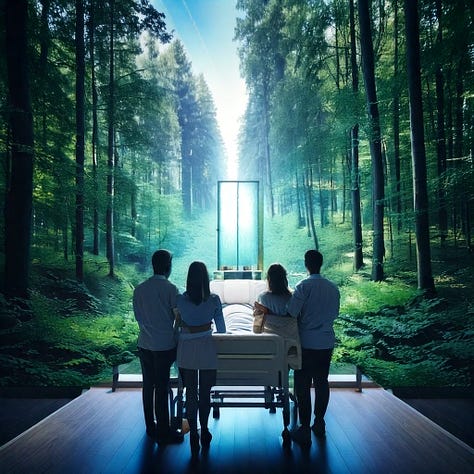
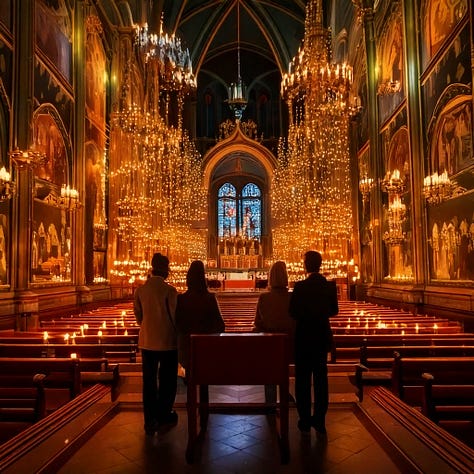
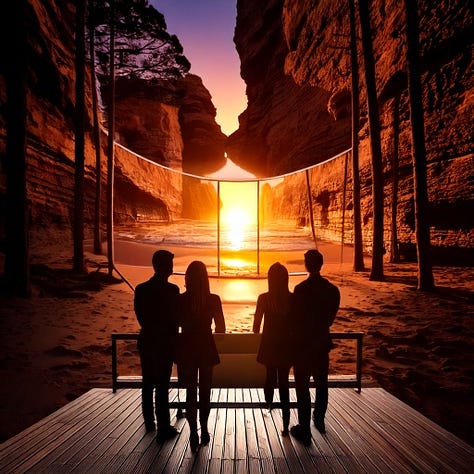
In discussions with classmates, additional key considerations emerged: balancing medical staff's practical needs while creating meaningful experiences, designing spaces welcoming to both religious and non-religious individuals, and perhaps how this transformation might help society develop better acknowledgment and rituals for death.
This project challenged me to explore how thoughtful world-building in healthcare spaces could make profound moments more beautiful and meaningful—while maintaining essential medical functions. If death must occur in a hospital, how might we create conditions for a beautiful end?

More on designing for endings
One of my professor’s recommended I read this book: Being Mortal, What Matters in the End
An interview with IDEO's Paul Bennett on designing for the end-of-life experience
A design proposal for redesigning hospice care by architect, Sangeetha Palangat Othayoth
Do you have other resources to share? Please add them in the comments!




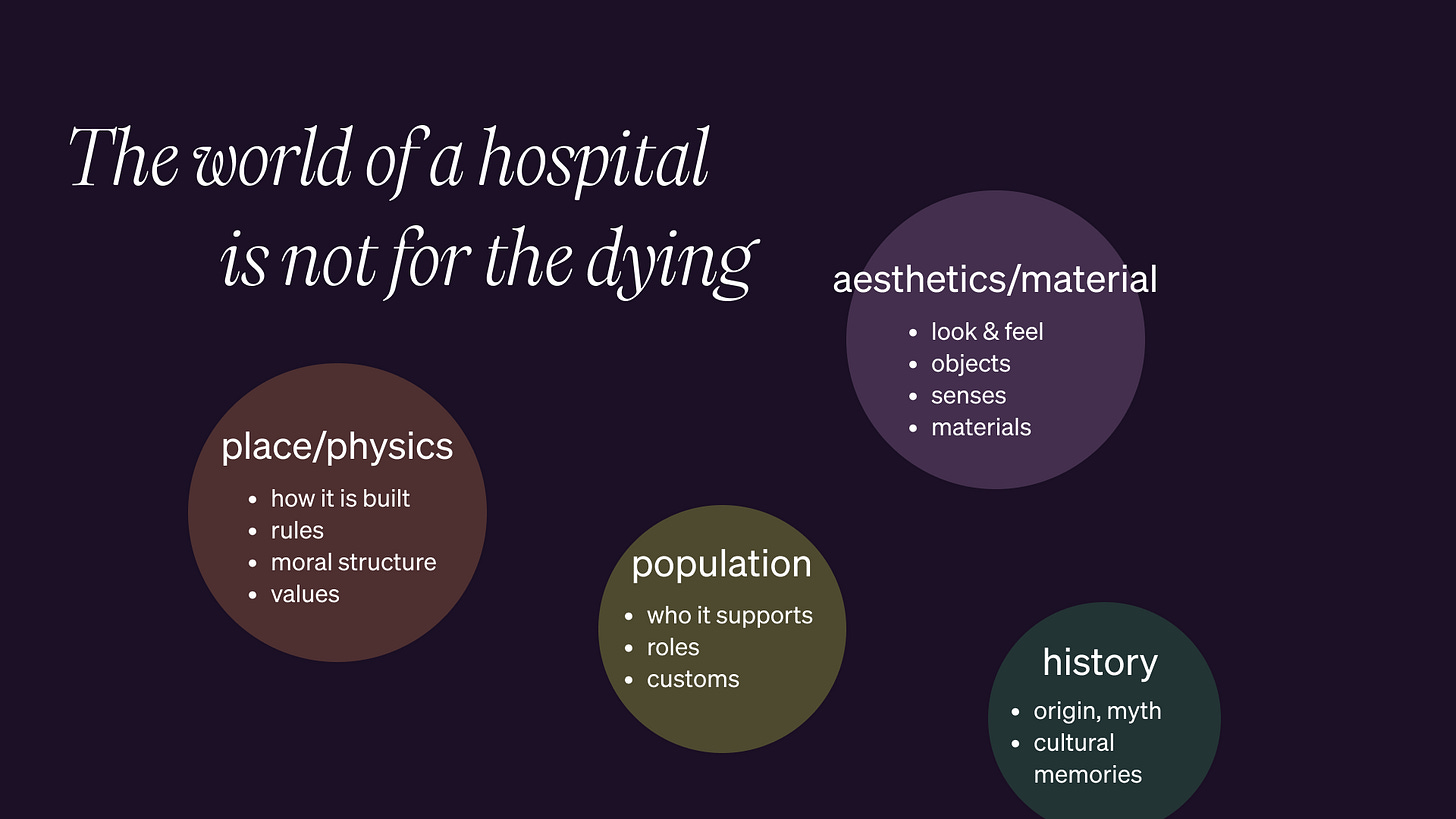



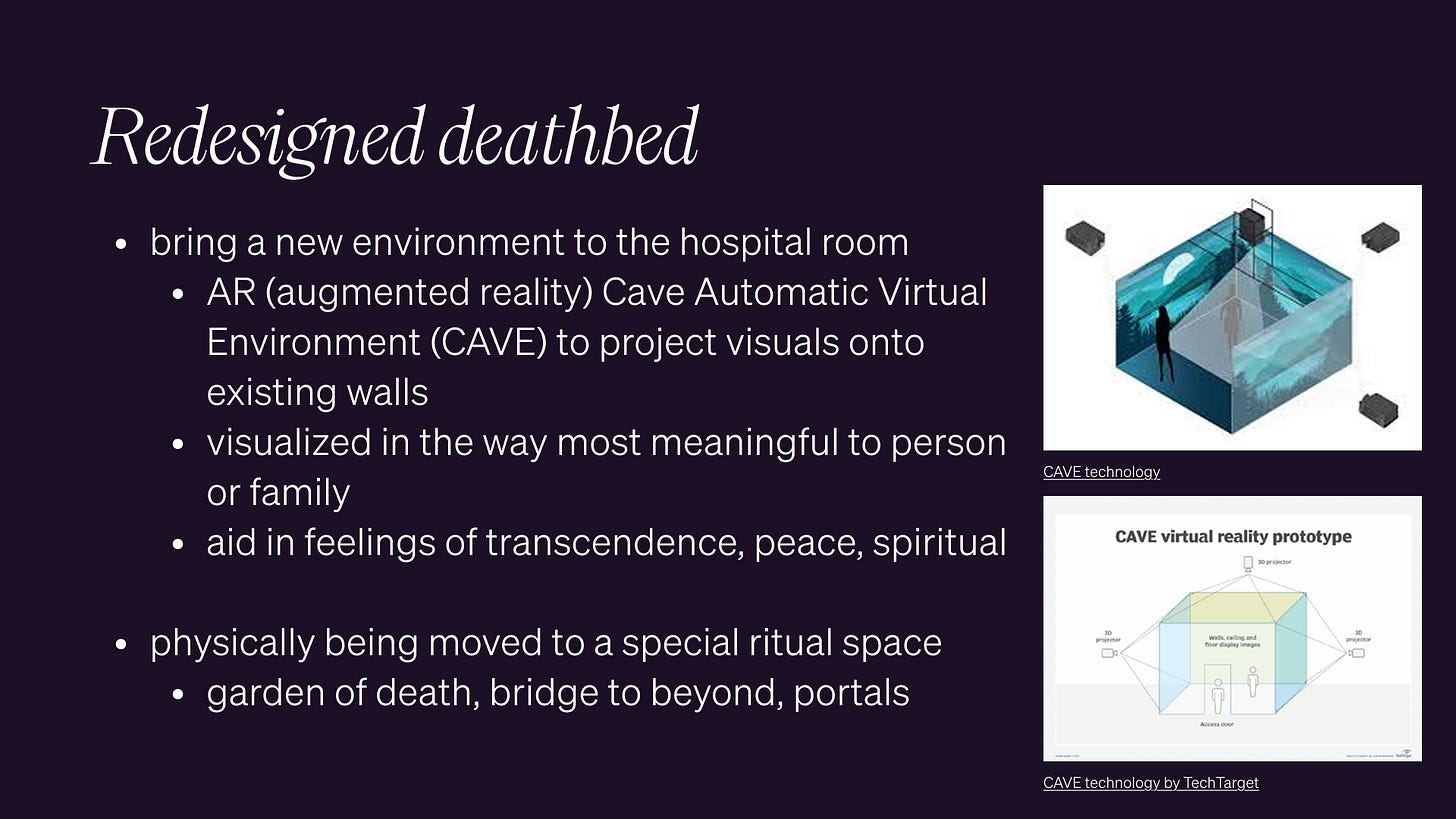
I love this question! I’ve thought a lot about my desire to die at home. (I see a lot of parallels with birth and death) I planned a homebirth when I had my son in 2022, he was born in hospital. It made me realise that plans can go awry and sometimes the hospital is the best place to be for a significant transition. To be able to step back and think ‘if I was to die in hospital, what could that look like’ is so valuable.
The thing that strikes me most is that I thought we needed humanity in birth and death work but actually from what you’ve shared it’s more about care and that is something AI can provide/supplement/support.